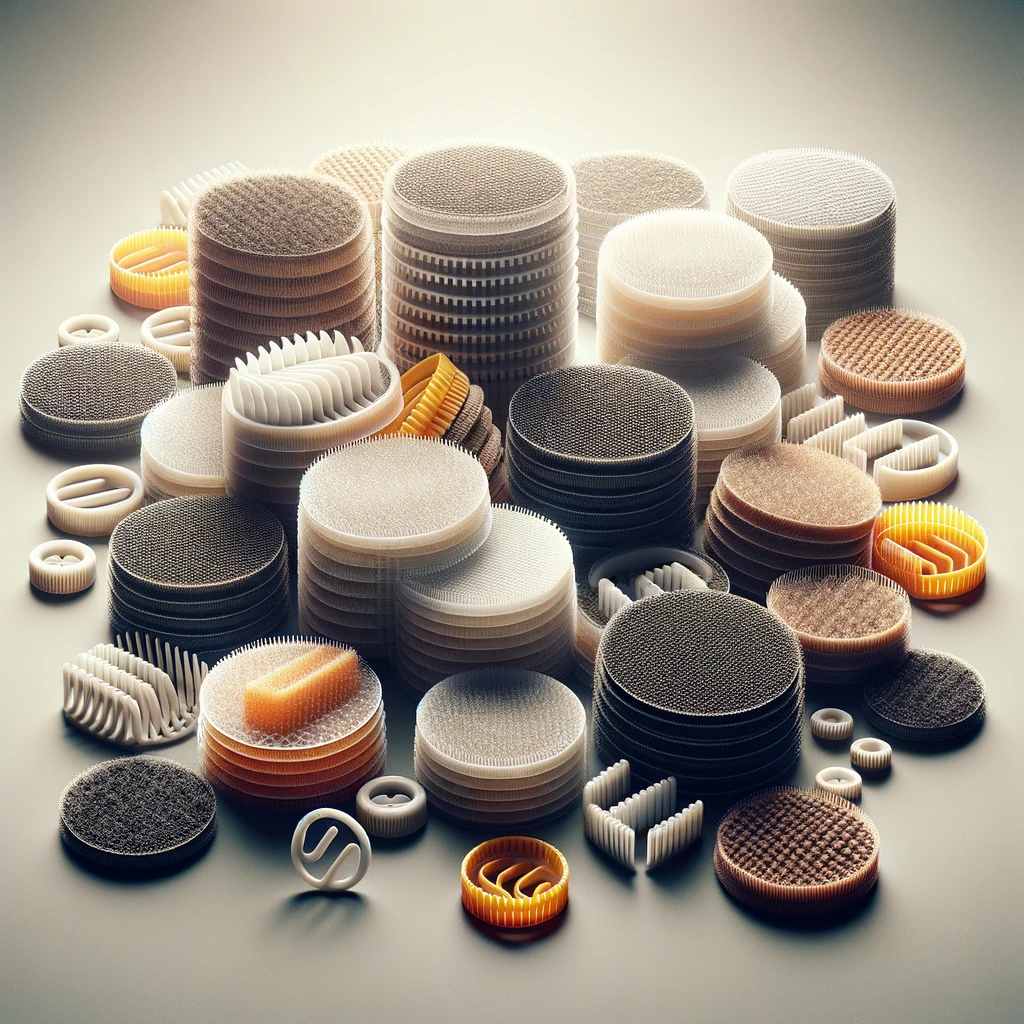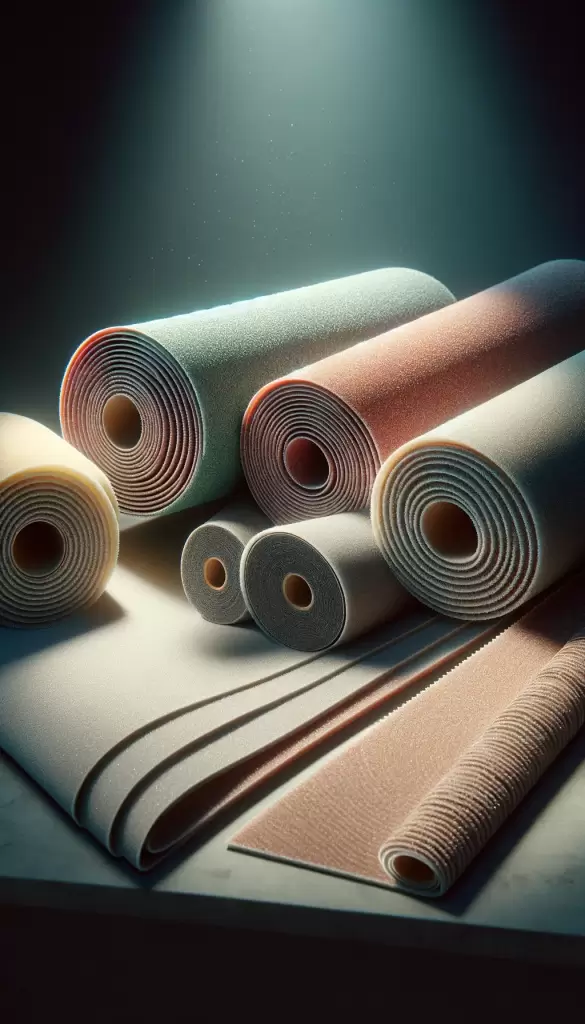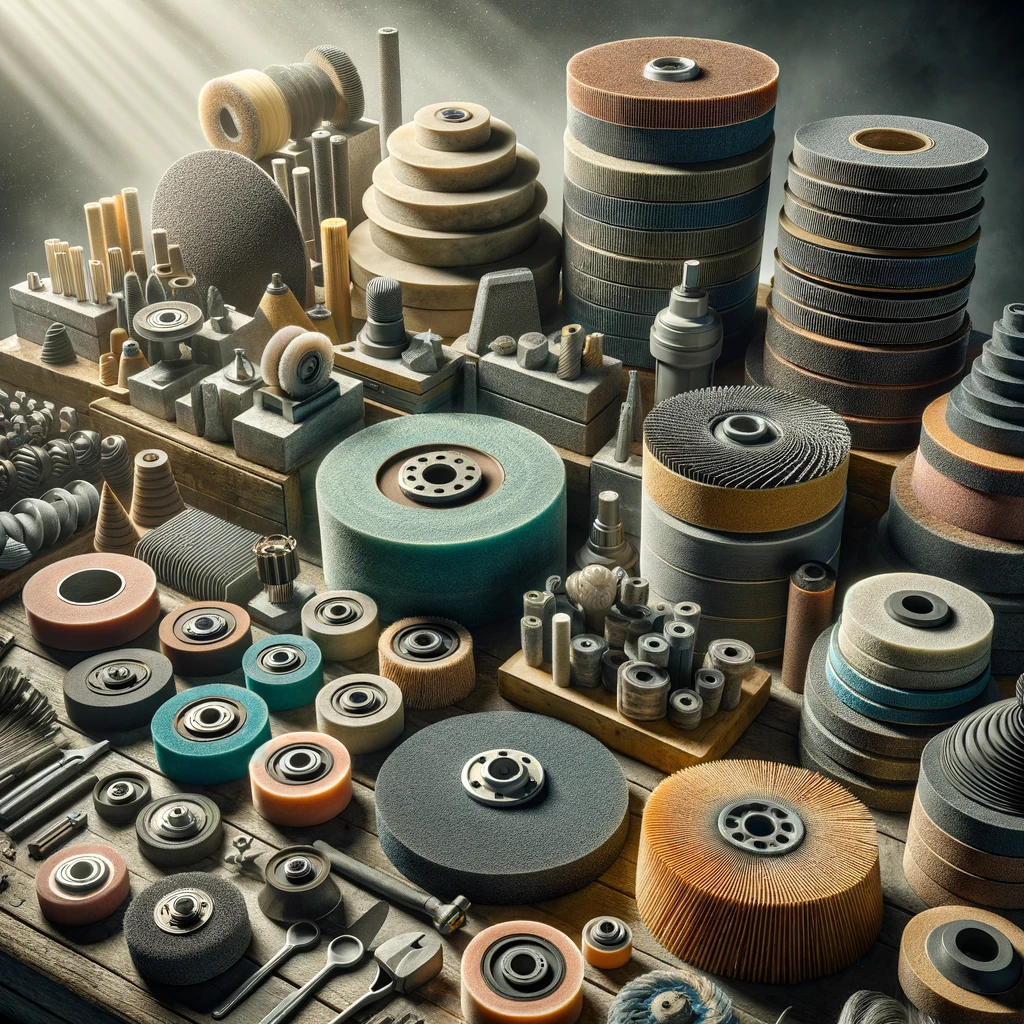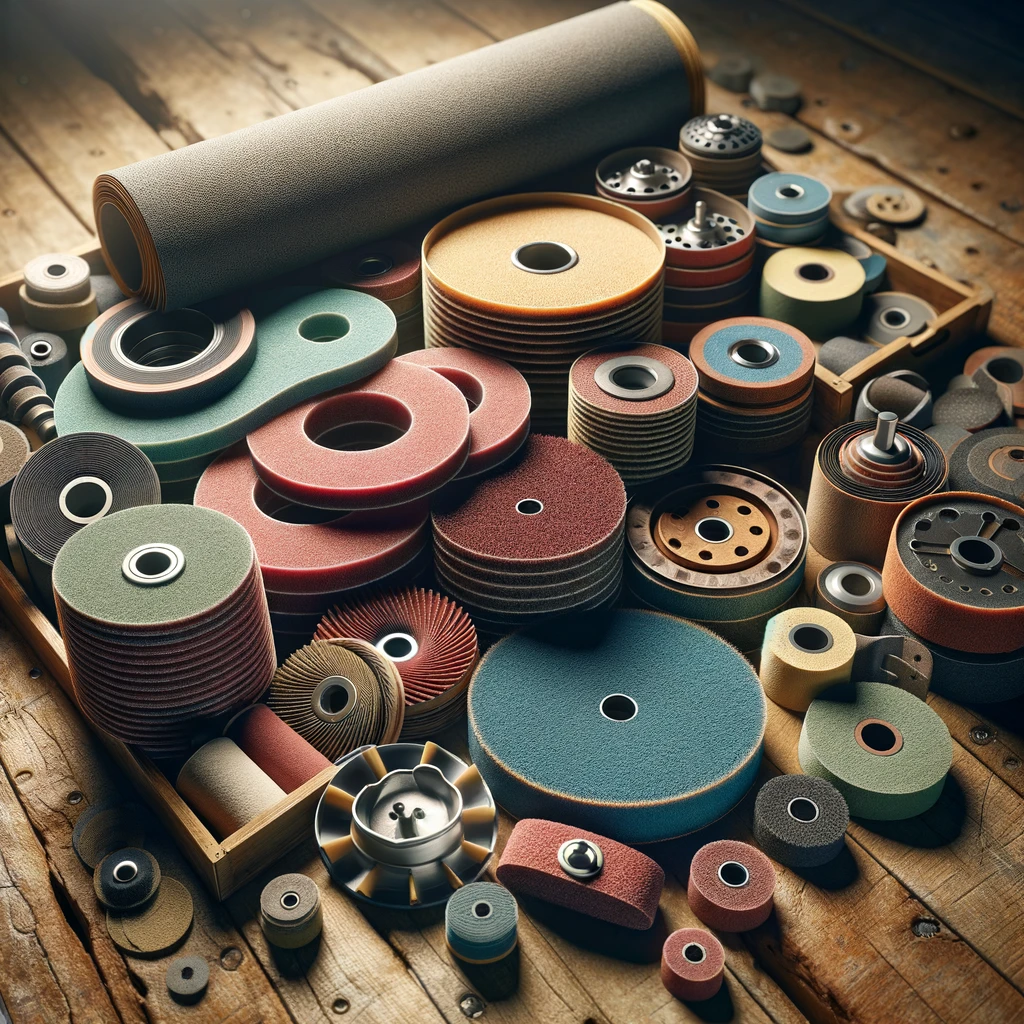At our company, we offer a wide selection of top-tier abrasive products, including Cloth Rolls, Paper Rolls, Kraft Sheets, and many more, designed for optimal performance in various applications. Our unmatched brand UNCLE ABRASIVE shows our commitment to innovation, quality, and customer satisfaction, ensuring each product delivers unparalleled durability and efficiency. Our diverse range caters to all your sanding, grinding, and polishing needs, with expert support available to guide you to the perfect solution. Choose us for a smoother, more efficient, and cost-effective experience in achieving the perfect finish.
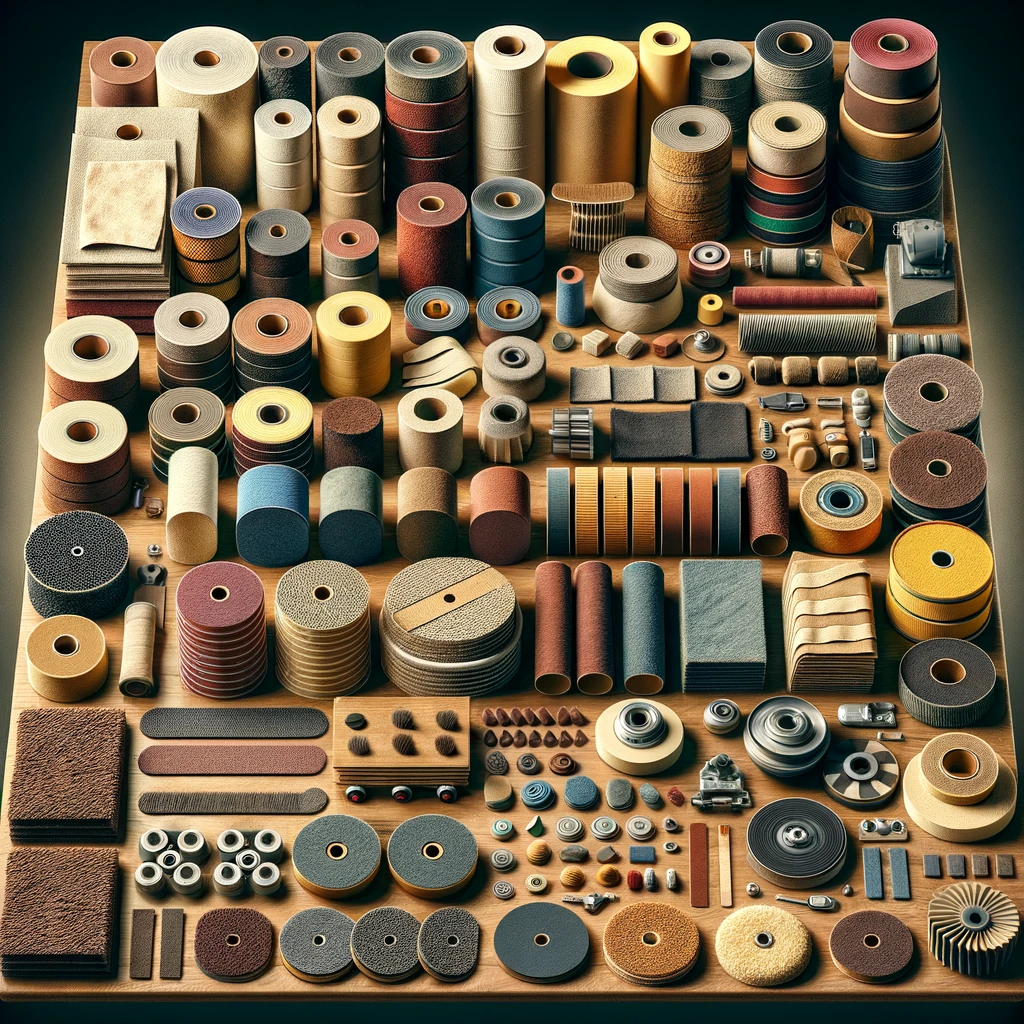
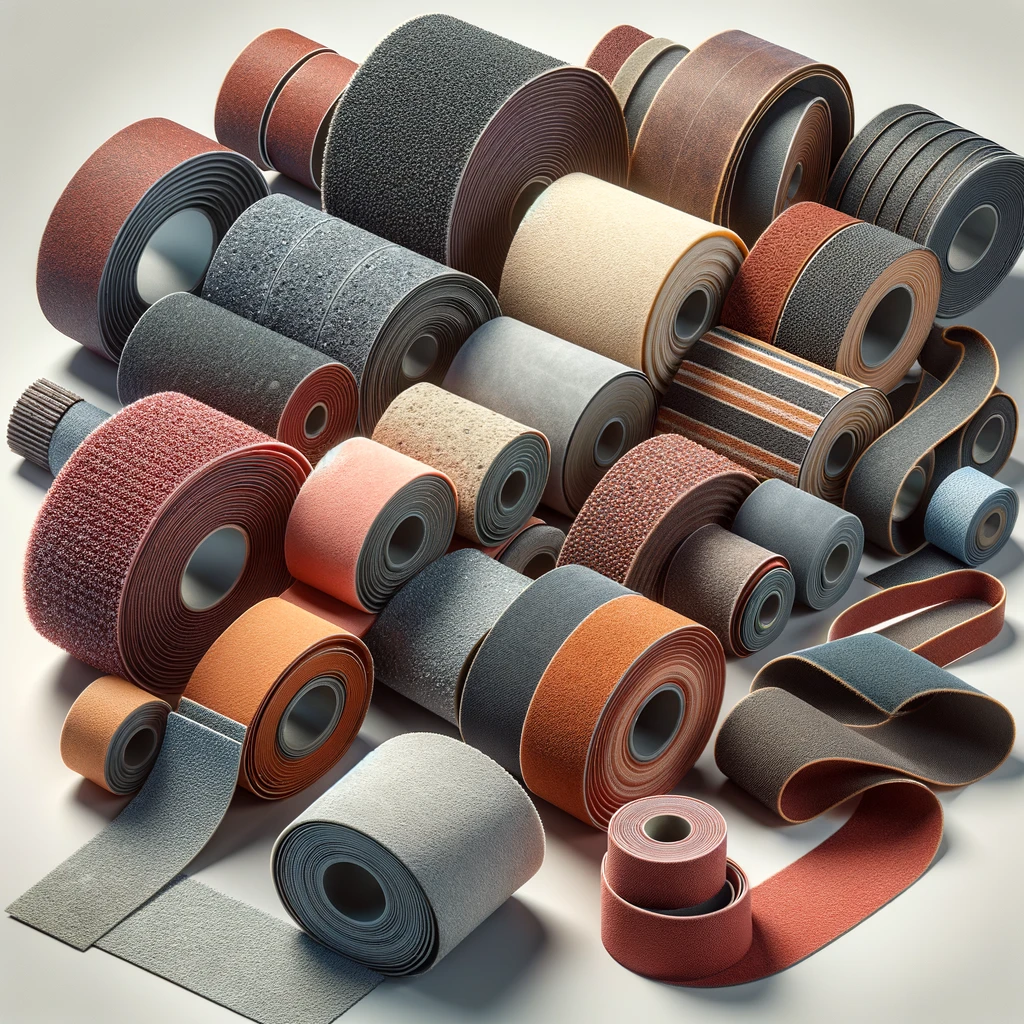
Our abrasive product line offers unparalleled precision and durability for all your sanding, grinding, and polishing needs, ensuring optimal performance across various materials and applications. From cloth rolls to grinding wheels, each product is designed to meet the highest standards of quality and efficiency.
Abrasives We Deal In
Sanding Discs:
Attachments: Velcro / PSA Disc
Grain: Red Aluminum oxide, Purple Ceramic, Blue Zirconia, Silicon carbide
Backing: Paper / cloth / film
Size: 100mm, 125mm, 150mm, 180mm
Fiber Discs:
Grain: Silicon carbide, Red Aluminum oxide, Ceramic
100mmx16mm, 125mmx22mm, 150mmx22mm, 180mmx22mm
Flap Discs:
Grain: Red Aluminum oxide, Ceramic, Zirconia, Silicon carbide
Size: 100mmx16mm 125mmx22mm 150mmx22mm 180mmx22mm
Velcro Disc Pads:
Size: 100mmx16mm 125mmx22mm 150mmx22mm 1,80mmx22mm
Cloth Rolls:
Application : Wood, Metal, Plastic, stone, steel etc.
Aluminum Oxide, Silicon Carbide, Zirconia, Ceramic,
Backing: Cloth J wt, X wt, Y wt, XY wt, Z wt
Paper Rolls :
Application: Tannery Leather, wood, Metal.etc
Aluminum Oxide, Silicon Carbide
Backing: E-wt
Abrasive Sheets:
Kraft Sheets: Grain Silicon Carbide / Backing D-wt,C-wt
Latex Sheets: Grain Silicon / Backing D-wt, C-wt, E-wt
Cloth Sheets: Grain Aluminum oxide / Backing Cloth
No-FIL/ Non-Loading Stearate Coating Sheet: Grain Premium aluminum oxide /
Backing C-wt /Latex paper.
Abrasive Belts:
Aluminum Oxide, Silicon Carbide, Zirconia, Ceramic,
Backing: Cloth Jwt, X-wt, Y-wt / Paper C-wt, E-wt
Sizes: Upto 50
Abrasive Sanding Sleeves:
Aluminum Oxide, Silicon Carbide, Zirconia, Ceramic,
Backing: Cloth Jwt, X-wt, Y-wt / Paper C-wt, E-wt
Abrasive Sanding Drums:
Aluminum Oxide, Silicon Carbide, Zirconia, Ceramic,
Backing: Cloth Jwt, X-wt, XY-wt, Y-wt
Sizes : Upto 36
Includes Rubber Drum Mandrels – 1/2, 3/8 & 1/4″
Abrasive Sponges:
Discs, pads, etc search
Grinding Wheels
Grinding Wheels often comes in following sizes
Diameter: This is the overall width of the wheel, measured from edge to edge. Common diameters for grinding wheels include 4-1/2 inches, 6 inches, 7 inches, and 9 inches.
Thickness: This is the width of the wheel from the side that mounts on the grinder to the outer grinding surface. Common thicknesses for grinding wheels include 1/4 inch, 1/8 inch, and 7/8 inch.
Grinding Discs:
Abrasive grinding discs, similar to grinding wheels, come in a variety of sizes to suit different grinding tasks. The two main measurements used to specify the size of a grinding disc are:
- Diameter: This refers to the disc’s overall width, measured from one edge to the other. Common diameters for grinding discs include 4.5 inches (115 mm), 5 inches (125 mm), 6 inches (150 mm), 7 inches (180 mm), and 9 inches (230 mm).
- Thickness: This is the width of the disc from the side that mounts on the grinder to the outer grinding surface. Typical thicknesses for grinding discs range from 1/8 inch (3 mm) to 1/4 inch (6 mm).
Cutting Discs:
Cutting discs, also referred to as cut-off wheels, come in various sizes to match the cutting requirements and the power tool they’re designed for. The two main dimensions that define the size of a cutting disc are:
- Diameter: This is the disc’s overall width measured from one edge to the other. Common cutting disc diameters range from 4 inches (100 mm) to 14 inches (350 mm). However, the most popular sizes for DIY applications and smaller angle grinders are 4.5 inches (115 mm) and 5 inches (125 mm). Larger diameter discs are used for industrial purposes or with stationary saws capable of handling the size and weight.
- Thickness: This is the width of the disc from the side that mounts on the grinder to the outer cutting edge. Thicker discs (typically 3mm to 6mm) offer more stability and can last longer, while thinner discs (as thin as 1mm) provide faster and more precise cuts but may not be suitable for heavy-duty applications.
Here are Size chart summarizing cutting disc:

Buff Pads:
Buff pads, also known as polishing pads or abrasive pads, come in a variety of sizes to suit different polishing and buffing applications. There’s no single standardized sizing system, but generally, buff pads are characterized by their diameter and thickness.
- Diameter: This is the overall width of the buff pad, measured from one edge to the other. Common diameters for buff pads range from 3 inches (75 mm) to 10 inches (254 mm). Smaller diameter pads are ideal for detailed work or reaching into tight spaces, while larger diameter pads are better suited for covering larger surface areas.
- Thickness: This is the width of the pad from the side that attaches to the backing plate or machine to the outer polishing surface. Buff pad thicknesses typically range from 1/4 inch (6 mm) to 1 inch (25 mm). Thicker pads offer more cushion and conformability to contours, while thinner pads provide more control and a firmer polishing action.
Here are some additional factors to consider when choosing buff pad sizes:
- The size and shape of the workpiece: You’ll want a buff pad that is large enough to comfortably cover the surface you’re working on. For oddly shaped objects, a smaller pad may be more maneuverable.
- The type of polishing or buffing you’re doing: Heavier polishing jobs may benefit from a larger pad for better coverage, while finer polishing tasks may require a smaller pad for more precision.
- The backing plate or machine you’re using: Buff pads should be compatible with the size and attachment system of your backing plate or polishing machine.
Remember, buff pad size is just one factor to consider when choosing the right pad for your project. Other important factors include the pad’s abrasive material, density, and attachment method.
Foot Files for Callus Remover:
Foot files for callus removers come in a variety of sizes to cater to different needs and preferences. Here’s a breakdown of the common sizes:
- Standard Size: This is the most popular size, measuring around 6 to 8 inches (15-20 cm) in length and 1 to 2 inches (2.5-5 cm) in width. It provides a good balance of reach and control for most foot sizes.
- Large Size: These foot files are ideal for people with bigger feet or for those who want more coverage in a single stroke. They typically range from 8 to 10 inches (20-25 cm) in length and 2 to 2.5 inches (5-6.5 cm) in width.
- Travel Size: Perfect for portability and keeping your feet smooth on the go, travel-sized foot files are generally around 4 to 6 inches (10-15 cm) in length and 1 to 1.5 inches (2.5-4 cm) in width. They are ideal for slipping into a purse or toiletry bag.
- Micro Foot File: These tiny foot files are designed for precise callus removal, especially around toes and tight spots. They typically measure around 2 to 3 inches (5-7.5 cm) in length and 0.5 to 1 inch (1.25-2.5 cm) in width.
Anit skid tape:
- Size: 1” & 2”
This list organizes the abrasives into categories based on their types and materials for easy reference.
Automotive Industry
- Paper Rolls, Latex Sheets, Velcro Discs: Used for sanding bodywork, preparing surfaces for painting, and polishing finishes.
- Fiber Discs, Grinding Discs: Employed for metal removal, smoothing welds, and surface preparation.
- Buff Pads: Essential for buffing and achieving a high-gloss finish on painted surfaces.
Woodworking Industry
- Cloth Rolls, Paper Rolls, Kraft Sheets: Integral for sanding, shaping, and finishing wood surfaces.
- Sanding Belts, Velcro Discs: Used on belt sanders and orbital sanders for efficient material removal and smooth finishes.
- Flap Discs: Occasionally used for more aggressive material removal and finishing on harder woods.
Metal Fabrication Industry
- Cloth Sheets, Fiber Discs, Grinding Wheels: Key in grinding, deburring, and preparing metal surfaces for welding or painting.
- Flap Discs, Sanding Belts: Utilized for blending, smoothing, and finishing metal surfaces.
- Grinding Discs: Used for precision cutting and grinding of metal components.
Construction Industry
- Kraft Sheets, Grinding Wheels: Employed for rough sanding and shaping materials, cutting stones, bricks, and metals.
- Cloth Rolls, Sanding Belts: Used for finishing surfaces, preparing for paint or coatings.
Manufacturing Industry
- Grinding Wheels, Grinding Discs: Essential for shaping, sharpening, and maintaining machinery and parts.
- Cloth Rolls, Fiber Discs: Used for surface preparation, rust removal, and cleaning of parts before assembly.
Leather Industry
Abrasives play a crucial role in several stages of leather processing within the leather industry. Here’s a breakdown of their key uses:
- Suede and Nubuck Creation: Abrasives are used to buff and roughen the surface of the leather hide, creating the fuzzy texture characteristic of suede and nubuck leather. This process can be achieved with sanding belts or drums coated with abrasive grits like aluminum oxide or silicon carbide.
- Smoothing and Finishing: Abrasives are also employed to smooth out imperfections and even the surface of the leather. This might involve sanding down raised grain areas or blemishes to create a consistent texture. Finer grits are typically used for this purpose.
- Fleshing: In the initial stages of leather processing, abrasives can be used during fleshing to remove excess meat, fat, and tissue from the underside of the animal hide. This can be done with abrasive blades or rollers.
- Buffing and Polishing: After tanning and dyeing, abrasives come into play again during the buffing and polishing stages. Buffing wheels or pads coated with fine abrasives help remove surface imperfections and create a desired level of shine on the leather.
- Shaping and Sanding Edges: Abrasives in the form of sanding tools or belts are used to shape leather pieces and smoothen their edges during the crafting process. This ensures a clean and finished look for leather goods.
Overall, abrasives are essential for achieving the desired texture, finish, and appearance of leather products in the leather industry. The specific type and grit of the abrasive used will vary depending on the particular stage of processing and the intended outcome.
Glass Industry
In the glass industry, abrasives play a vital role in shaping, smoothing and polishing glass throughout various stages of production. Here’s a closer look at their key applications:
- Glass Shaping and Fabrication:
- Grinding: Abrasive grinding wheels are used to grind down and shape flat glass pieces to specific dimensions. These wheels, typically containing diamond or silicon carbide abrasives, can achieve precise shaping for applications like mirrors, tabletops, and architectural glass.
- Beveling: To create angled edges on glass for decorative purposes or improved light refraction, abrasives on wheels or belts are used for beveling.
- Drilling: Specialized drill bits with abrasive elements like diamond are used to create clean and precise holes in glass for fixtures or decorative elements.
- Surface Finishing and Polishing:
- Smoothing and Scratch Removal: After the initial shaping, abrasives are used to remove scratches and imperfections from the glass surface. This might involve sanding discs or belts with progressively finer grits of silicon carbide or aluminum oxide.
- Polishing: To achieve a high-gloss, reflective finish, very fine abrasives like cerium oxide are used in buffing wheels or pads during the polishing stage. This is essential for optical glass and applications where clarity is paramount.
- Decorative Effects: Abrasives can also be used to create decorative effects on glass. Sandblasting techniques utilize a pressurized stream of abrasive particles (like crushed glass or aluminum oxide) to create frosted or etched designs on the glass surface.
Beauty and Healthcare Industry
- Foot Files: Used in pedicure services and personal care for smoothing and removing hard skin and calluses from feet.
Each industry leverages specific abrasives to meet their unique requirements for material processing, surface preparation, and finishing, ensuring efficiency and quality in their operations and end products.
